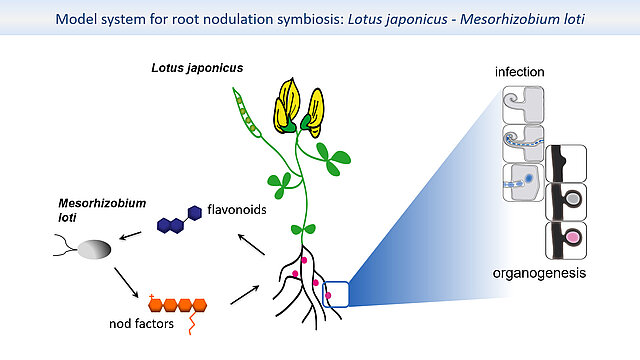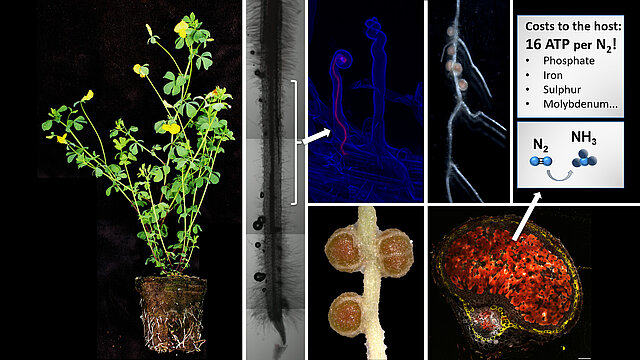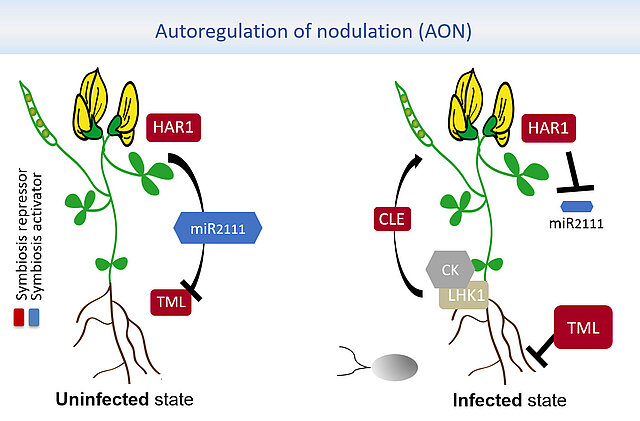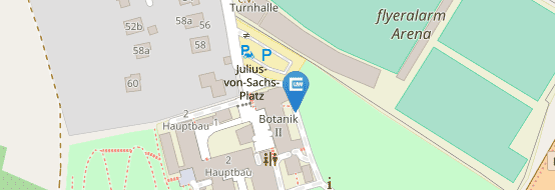Root nodulation symbiosis: ensuring a good bargain
Focus:
Root nodulation symbiosis: ensuring a good bargain
Project participants:
Christian Fröschel
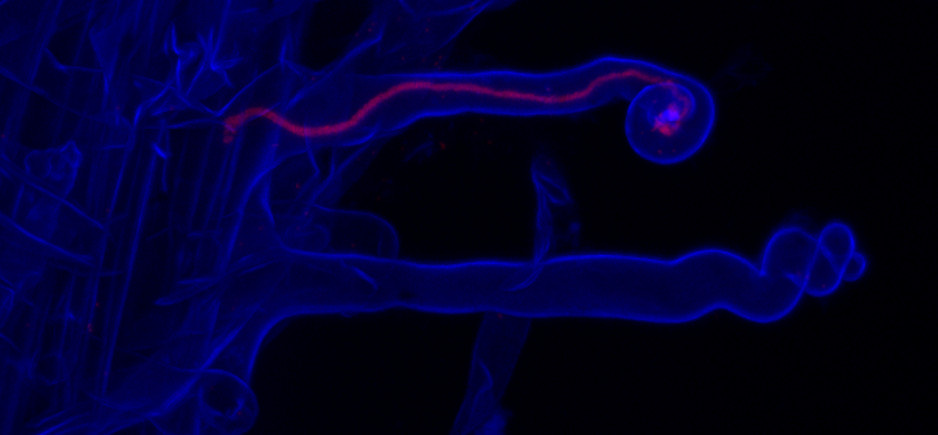
Apart from carbohydrates, plants need to acquire all nutrients from their environment. Among these, nitrogen is an essential nutrient for plants, as for all living organisms. To cope with nitrogen limitation, a widespread challenge to plants growing in terrestrial ecosystems, most legume plants and many members of the related lineages Fagales, Curcubitales and Rosales engage in mutualistic N-fixing endosymbiosis with bacteria.
In legumes, gram-negative rhizobia bacteria often enter roots through infection threads initiated within root hairs of compatible host plants, and progressing towards cells of nodule primordia developing laterally on roots. The model system predominantly used in our research is Lotus japonicus interacting with Mesorhizobium loti, which induces the formation of determinate, round nodules. Millions of nitrogen-fixing bacteroids dwell within functional nodules, which represent organs of high metabolic activity demanding a constant supply of carbohydrates and mineral nutrients.
Development of nodulation symbiosis in Lotus japonicus interacting with Mesorhizobium loti. Fotos: Katharina Markmann, Moritz Sexauer, Nikolaj Abel
Legumes thus balance symbiotic interactions with nitrogen-fixing rhizobial bacteria via a systemic feedback system tightly controlling rates of bacterial infection and nodulation events. This host regulatory system, termed autoregulation of nodulation (AON), prevents nutritional misbalances and is key to maintaining the association at a mutualistic state.
Schematic representation of components known to be involved in rhizobium-induced autoregulation of nodulation in Lotus japonicus. For additional information please see Tsikou et al., 2018, Science. HAR1, HYPERNODULATION ABERRANT ROOT FORMATION 1; miR2111, micro RNA 2111; TML, TOO MUCH LOVE; CLE, CLE-peptides; CK, cytokinins; LHK1, LOTUS HISTIDINE KINASE 1.
In addition to compatible rhizobial bacteria, external nitrogen (soil content of NH3 and KNO3) is a strong inhibitor of nitrogen-fixing symbiosis both in the lab and in the field. Notably, the impact of aereal N oxides on legume symbiotic competence and overall performance in the field is not understood, and is of increasing relevance due to increasing N-oxide formation as temperatures rise.
The molecular basis of nitrogen-dependent negative regulation of nodulation symbiosis is only partially understood, and is an important focus of our research interest.



